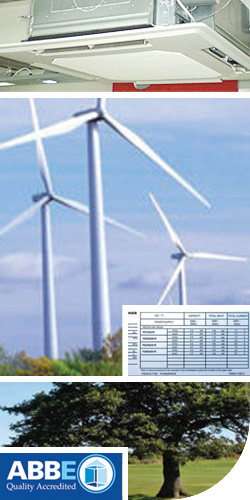
Phone: 01773 513938
What Will An Assessment Involve?
Air Conditioning Inspection & Assessment Nottingham
We are bound by CIBSE guide TM44, the authoritative document that mandates how assessments will be conducted. We are regularly audited against that document to ensure that our processes are correct. TM44 requires that we:
- identify and record all air conditioning equipment on a site;
- determine its state of repair;
- where possible, undertake a deeper analysis of equipment serving different areas of activity, say, a reception, office and canteen;
- determine whether the equipment is the correct size for the task;
- determine how it is being used.
To do so we check the equipment whilst it is running and calculate the 'cooling load' of an area to see whether that equipment is of sufficient capacity.
For example, if an area is being used as a call centre, then it is likely that there will be far more people in there than if the same room was simply an open-plan office. It will have more computers, printers and may even be used 24-7. Add to that a consideration of the efficiency of the fabric of the building, the orientation of the windows, whether there is shading on those windows and the heat given off from people working in there and we can start to determine the kilowatts of cooling required to provide an even and comfortable temperature.
We will then establish what form of heating is being provided from elsewhere, if any, and how the air con equipment is being used. Often, we can find the air con running as a matter of routine, radiators turned up to full and windows left open. Another common finding is where there are two systems installed in one room with one turned to heat whilst the other is trying to cool.
Where it is appropriate, our findings are presented as recommendations for improvement but those are not mandatory. However, if followed these should lead to a reduction in energy consumption.
Additionally, our findings will take into account that office walls tend to move over weekends and activities change just as often. The example of the call centre above is common where systems once fitted for the cooling load of an open-plan office could not possible cope with a changed activity.
Where systems are old, for example, those containing the now banned HCFC R22 refrigerant, we will recommend they be replaced not least because such old system run around 50% less efficiently than their modern equivalent.


Air Conditioning Energy Assessment Nottingham | Air Conditioning Assessment Nottingham | Air Conditioning Energy Assessor Nottingham
